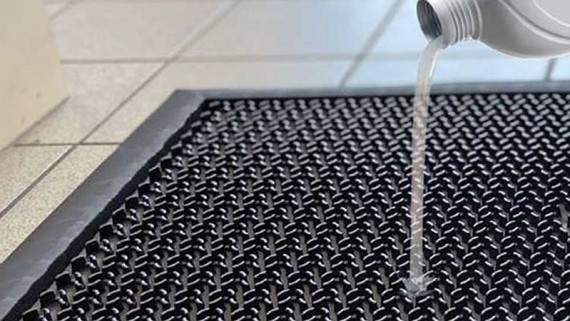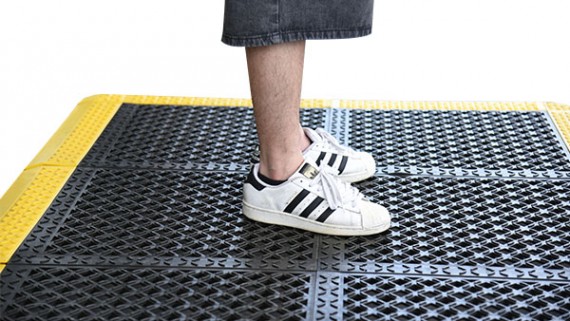How to improve work efficiency?
When we stand for long periods of time, we can easily experience fatigue, which can turn into a pain and ultimately reduce your productivity. Fortunately, our company manufactures and promotes a variety of anti-fatigue work mats that allow you to stand for long periods of time without pain. Our anti-fatigue work mat relieves pressure on the legs, feet and back, protects you from hard floor surfaces, and protects you from wet or wet floor surfaces.



What is the principle of anti-fatigue mat?
The principle of anti-fatigue mats is based on the concept of providing a cushioned surface that reduces the pressure on the feet and lower back, which can help reduce fatigue and discomfort for people who stand or walk for long periods of time. These mats can help promote good posture by encouraging the feet to be properly aligned and reducing pressure on the lower back. This can help prevent back pain and other musculoskeletal disorders.
When a person stands on a hard surface, the weight of their body is concentrated on the feet and lower back, which can cause muscle fatigue, soreness, and discomfort. Anti-fatigue mats are designed with materials that provide a cushioned surface to absorb the shock of standing or walking, and reduce the pressure on the feet and lower back.
How to select the correct anti-fatigue floor mat?
Selecting the correct anti-fatigue mat is important to ensure that you get the most benefits from using it. Consider your workplace needs and evaluate different options to select the mat that best meets your requirements. Here are some factors to consider when selecting an anti-fatigue mat:
- Size and shape: Choose a mat that fits the size and shape of your workspace. Consider the dimensions of the area where you will be standing or walking, and choose a mat that covers the entire area.
- Material: Anti-fatigue mats are made from a variety of materials such as rubber, foam, and gel. Each material has different properties that affect how it feels and how long it lasts. Consider the durability, comfort, and slip-resistance of each material.
- Thickness: The thickness of the mat affects how much cushioning it provides. Thicker mats generally provide more cushioning and are suitable for people who stand for long periods of time.
- Beveled edges: Beveled edges on the mat help reduce the risk of tripping by providing a smooth transition from the mat to the floor. Consider the type and size of the beveled edge when selecting a mat.
- Maintenance: Choose a mat that is easy to clean and maintain. Mats that are resistant to oils and chemicals may be necessary in certain environments.
- Ergonomics: Choose a mat that is designed for your specific workplace. For example, mats designed for commercial kitchens may have holes for drainage, while mats designed for assembly lines may have a textured surface for slip-resistance.
- Price: Consider the cost of the mat and whether it fits within your budget. More expensive mats may offer more features or durability, but may not be necessary depending on your workplace needs.
In short, let’s start buying and using anti-fatigue mats to reduce physical health damage, relieve fatigue, improve work comfort, and ultimately achieve the goal of improving work efficiency.





Comments
No comment yet.